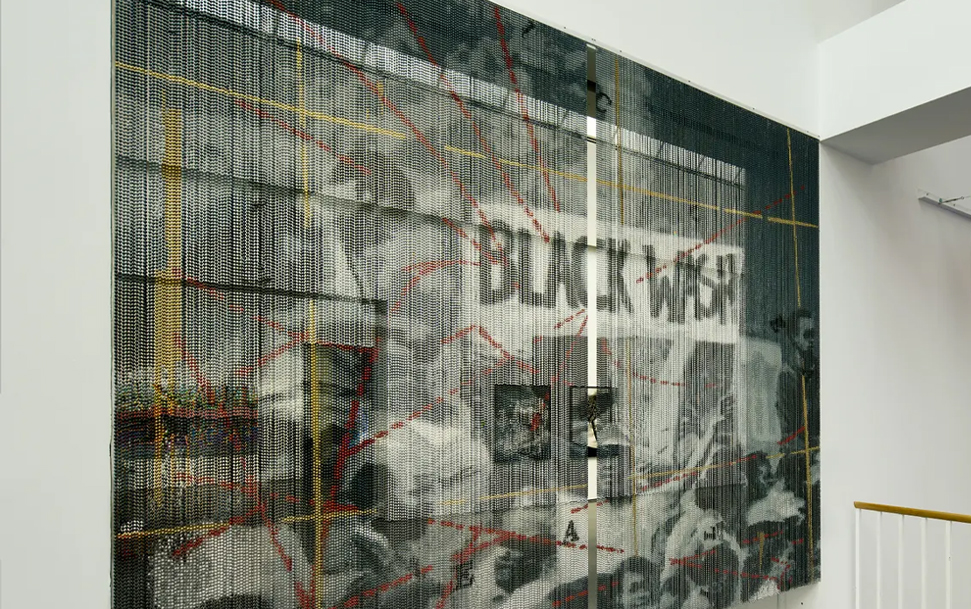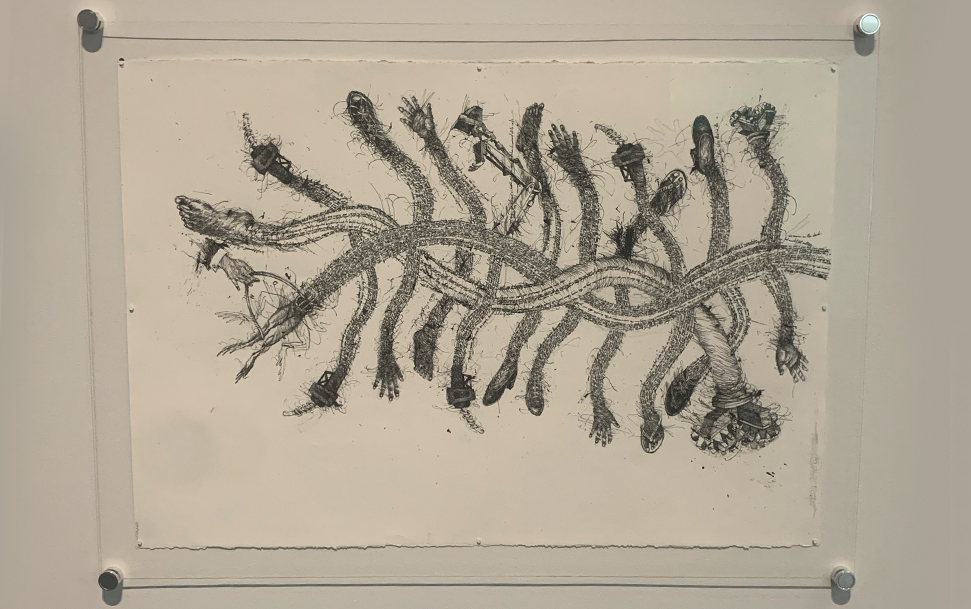
Image Making
Making images and repurposing images from archives are important ways to create and preserve memory. Archival photography and video both serve this purpose, and artists often use them as source materials to create works that question dominant historical narratives. In this gallery, artists either use existing photographs and video or create their own images to examine the history of Black activism, racial categories, and identity formation across different locations—from Great Britain to Costa Rica, to the United States, Jamaica, and Haiti.

Beyond The Boundary
Cosmo Whyte (b. 1982, St. Andrew, Jamaica; lives in Los Angeles, CA) Nickel-plated steel ball chain curtain Studio assistance: Alex Adkinson and Iris Schaer Beyond the Boundary shows a 1984 image of Black spectators watching a cricket match between England and the West Indies. One man holds a sign that reads “Black wash,” which is a play on the cricket term “whitewash,” or when a team wins at least three matches in a row. “Blackwash” is often used in reference to the West Indies’ five consecutive wins against the English in 1984, an important event for people in the Caribbean and its diaspora. As C. L. R. James argues, cricket has been both a real and metaphorical arena where the larger power dynamics of colonialism and anti-Blackness are played out. By transferring archival images, especially those depicting the history of Black protest and activism, onto threads of nickel-plated steel beads, Cosmo Whyte invites visitors to “breach” the curtain and feel the literal and metaphorical weight conveyed through such images.
Learn More About the Artist
Dem Things Does Bite Too?
Christopher Cozier (b. 1959, Port of Spain, Trinidad and Tobago; lives in Port of Spain) Ink on paper
Learn More About the Artist
La Coronación De La Negrita
Marton Robinson (b. 1979, San José, Costa Rica; lives in Toronto, Canada) Chalkboard paint and chalk on canvas Marton Robinson’s series El negro en Costa Rica takes its name from a book written by Carlos Meléndez and Quince Duncan, which traces the histories of the country’s Black population in Limón. In La Coronación de La Negrita, Robinson reimagines the cover of the book, incorporating several symbols and images that reference the histories of racial violence that connect the Caribbean to the United States. Here, Robinson depicts the Virgin of the Angels, Costa Rica’s patron saint. She is holding a baby meant to resemble Cocorí, the main protagonist of an illustrated children’s book written by Joaquín Gutiérrez that features racist depictions of Black Costa Ricans. The coronation of the patron saint, Cocorí’s mother, is a reference not only to Catholic traditions but also to coronar (used, in slang terms, to mean “scoring big”), which in Costa Rica refers to making money by finding the discards of the drug trade.
Learn More About the Artist